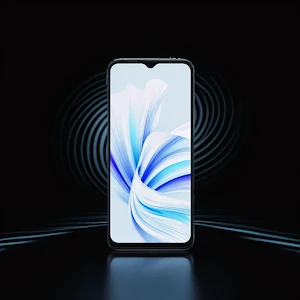The Blackview Wave 8C: A Budget Phone That Makes Sacrifices (But Not All Bad)
Let’s get this out of the way first: the Blackview Wave 8C isn’t going to blow your mind. But for €62? It’s not trying to. This is a phone built for one job—surviving basic daily tasks without emptying your wallet. Let’s break down what that actually means.
The Screen: Bigger Isn’t Always Better
That 6.56-inch screen sounds generous, but here’s the catch: it’s a 720p LCD panel. Imagine stretching a standard-def YouTube video across a tablet—you’ll notice pixels, especially in text or small icons. Scrolling through Instagram? Photos look a little muddy, like someone smeared Vaseline on the display. Brightness tops out at 400 nits, which is fine indoors but struggles under direct sunlight. Want to watch Netflix on your lunch break? It’ll do, but don’t expect those sunset scenes in Stranger Things to pop.
Performance: Like Riding a Bicycle in a NASCAR Race
The Unisoc SC9863A chip inside is built on a 28nm process—ancient by 2024 standards. Pair that with 2GB of RAM, and you’ve got a phone that treats multitasking like a chore. Switching between WhatsApp and Google Maps feels like convincing a toddler to share toys: possible, but slow and occasionally frustrating. That 149,800 AnTuTu score? That’s lower than a 2017 iPhone 8. Casual games like Candy Crush chug along, but anything 3D (Genshin Impact, forget it) will turn this phone into a pocket warmer.
Battery Life: The One Big Win
Here’s where the Wave 8C shines. That 4,700mAh battery combined with low-power hardware means you’ll easily get two days of light use. Checking emails, texting, a few TikTok scrolls—no problem. But charging? It’s stuck at 10W. Zero to full takes over two hours. Think of it as the “charge it overnight” type.
Camera: Don’t Quit Your Day Job
The 8MP rear and front cameras are… functional. In bright daylight, you’ll get passable shots for social media (if you don’t zoom in). But low-light photos look like they’ve been taken through a shower curtain. No optical stabilization means even steady hands produce blurry pics. Video? It maxes out at 30fps—your vacation clips will look straight out of 2012.
Design and Durability: Plastic Fantastic
The all-plastic body feels cheap, but there’s a silver lining: it’s lightweight (193g) and has IP52 splash resistance. Survives a rainy walk, but don’t drop it in a puddle. The removable battery is a rare perk—swap it out if it degrades in a few years. No NFC means no contactless payments, though.
Who’s This For?
Buy this if: You want a backup phone for festivals/hikes, need something for grandma’s calls and texts, or you’re on a tight budget.
Skip this if: You care about smooth performance, take photos often, or hate charging slowly.
The Tradeoffs: What Did Blackview Sacrifice?
To hit this price, Blackview cut corners everywhere: outdated Bluetooth 4.2 (no wireless headphones without lag), a basic single speaker, and no gaming-friendly cooling. But they kept Android 14 clean—no bloatware—and included a headphone jack. Priorities, right?
My Take: Would I Use This Phone?
As a daily driver? No way. My workflow involves juggling Slack, YouTube, and camera apps—this phone would give me an aneurysm. But as a burner phone for travel or a kid’s first device? It’s a decent value. The battery and removable back are standout features in this price range. Just know you’re signing up for a lot of compromises.
Final verdict: The Wave 8C is like a microwave meal—it’ll keep you fed, but don’t expect gourmet. If €62 is your max budget, it’s serviceable. But stretch to €100, and phones like the Nokia G22 or Xiaomi Redmi A3 offer better screens and performance.
